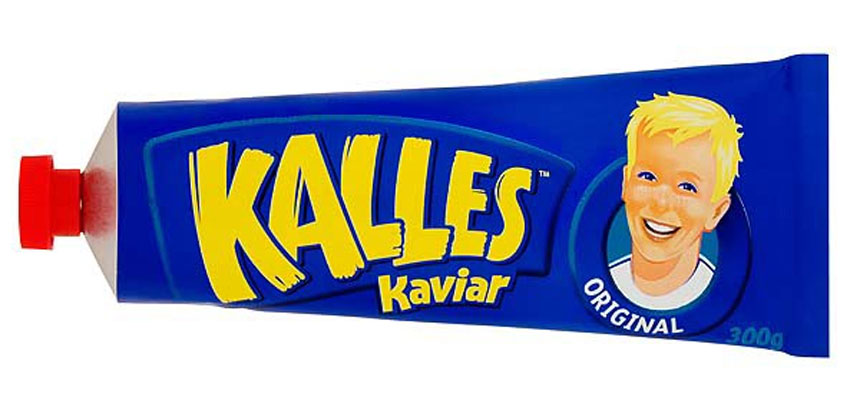When did Swedes go blond?
What do Emil in Lönneberga, Anders Zorn’s “dalkullor,” and Kalle on the tube of Kalles Kaviar have in common? They’re all Swedish, blond, and blue-eyed.
-
 Are you as blond and blue-eyed as Kalle? Launched in 1954 the tube has maintained the same design from the beginning, depicting the son of the then CEO of the manufacturing company.
Are you as blond and blue-eyed as Kalle? Launched in 1954 the tube has maintained the same design from the beginning, depicting the son of the then CEO of the manufacturing company. -
-
Being blond and blue-eyed is something very strongly connected to “Swedishness.” But is it a true image? In a 2014 book called “Blond och blåögd” (Blond and blue-eyed), the myth was examined.
In the fall of 2011, journalist Patrik Lundberg caused commotion because of his article about the prejudice against Asians. The example of so-called Kinapuffar candy (Chinese puffs) and the bright yellow Asian man with a coolie hat, quickly turned into a debate. Fazer, the brand that produces the chocolate, then pulled back the logo.
Then what about Kalle on the tube of Kalle’s Kaviar? One sarcastic debater on Swedish Television called that a “racist caricature of a typical Swede!” This was followed by Stina Wirsén’s cartoon characters, then came Tintin in Congo, and Minister of Culture Lena Adelsohn Roth’s pie scandal.
A storm in a teacup? Think what you may, it led to Jeff Werner, professor of Art History at Stockholm University to write a book 10 years ago.
“It’s been a great debate the past few years, and it is strange how all the time it is about the ‘other.’ Nobody asks about the norm, the white people,” Werner says. In his book, “Blond och blåögd: Vithet, svenskhet och visuell kultur,” he states that the image of the Swede as blond and blue-eyed is fairly new. In the 18th century, for instance, Benjamin Franklin described Swedes as a non-white, swarthy people, while the Swedes themselves didn’t view themselves as blond or blue-eyed either.
“The image of the Swedish appearance came with nationalism,” says Werner. “Before that, people talked more about customs and practices rather than skin tone. Only at the end of the 1800s was the view that you can actually tell a real Swede by looking at him developed.”
Because of artists like Anders Zorn and Carl Larsson, the national romantic image of the blond Swede was established. And what has it all led to? Today, people who look like they’re “not Swedish” are being controlled, says Werner. “In ads, films, and pictures the image of Swedes as white, blond, and blue-eyed is kept alive. What’s so unpleasant is that all statistics show that it is getting harder to get a job and housing if you don’t look ‘Swedish.’”
Osmond Karim’s 2014 documentary “Raskortet” (The Race Card) deals with black Swedes and their experiences of modern racism. He is convinced the image of the Swede means something for the person who deviates from it. “At my children’s school there’s a teacher who speaks English with me, even though I always answer in Swedish. Her mind is completely locked, her image of me is not consistent with what I really say. So how will this image affect people when I apply for a job?”
In ”Blond och blåögd,” Sweden is described as becoming more and more blond every decade, the stronger the image of a “Swedish” appearance becomes. In the book the thesis “Svenska latinas” (Swedish Latinas) is mentioned, in which sociologist Catrin Lundström describes Swedish immigrant girls who bleach their hair and get blue contact lenses in order to appear more Swedish.
“Werner’s book is important since it hightlights an image that is not true. Somewhere the ideal got so strong that we cannot determine whether or not it is true anymore. Is your reflection different? Then bleach your hair,” Osmond Karim says. -
-
